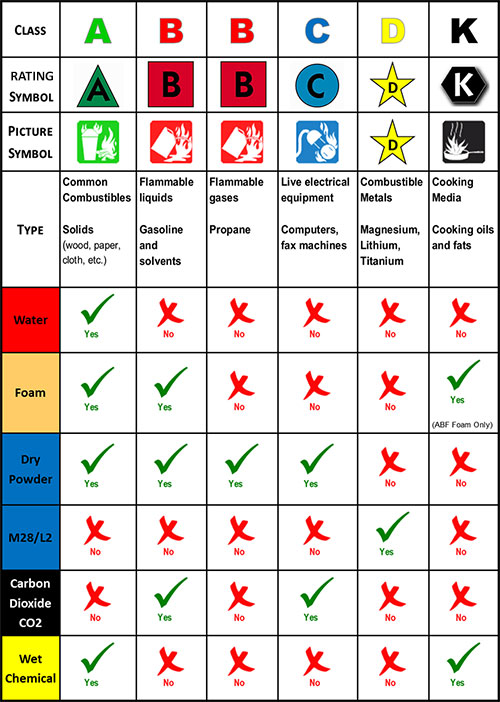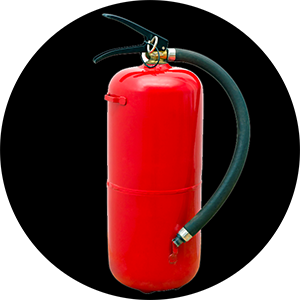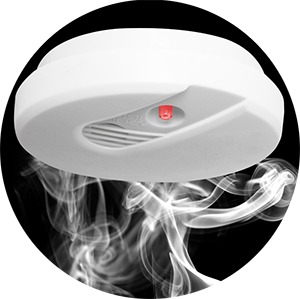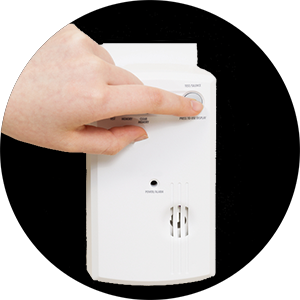Fire Extinguisher
A portable fire extinguisher can save lives and property by putting out a small fire or containing it until the fire department arrives; but portable extinguishers have limitations. Because fire grows and spreads so rapidly, the number one priority for residents is to get out safely. While fire extinguishers are an important part of fighting small fires, you should fight a fire with a fire extinguisher only when all of the following are true:
- Everyone has left or is leaving the building.
- The fire department has been called.
- The fire is small and confined to the immediate areas where it started such as in a wastebasket, cushion, small appliance, stove, etc.
- You can fight the fire with your back to a safe escape route.
- Your extinguisher is rated for the type of fire you are fighting and is in good working order.
- You have had training in use of the extinguisher and are confident that you can operate it effectively.
Remember, if you have the slightest doubt about whether or not to fight the fire – DON’T. Instead, get out, closing the door behind you to slow the spread of the fire. You have a well trained and equipped fire department standing by ready to protect you. They are professionals, let them do their job.
To operate a fire extinguisher, remember the word PASS:
- Pull the pin. Hold the extinguisher with the nozzle pointing away from you, and release the locking mechanism.
- Aim low. Point the extinguisher at the base of the fire.
- Squeeze the lever slowly and evenly.
- Sweep the nozzle from side to side.

Fire extinguishers are not designed to fight a large or spreading fire. Even against small fires, they are useful only under the right conditions. An extinguisher must be large enough for the fire at hand. It must be available and in working order, fully charged. The operator should be familiar with the extinguisher so it won’t be necessary to read directions during an emergency.
A fire extinguisher should be “listed” and “labeled” by an independent testing laboratory such as FM (Factory Mutual) or UL (Underwriters Laboratory). The higher the rating number on an A or B fire extinguisher, the more fire it can put out, but high-rated units are often the heavier models. Make sure you can hold and operate the extinguisher you are buying.
Remember that extinguishers need care and must be recharged after every use. Ask the dealer about the extinguisher and how it should be serviced and inspected. A partially used unit might as well be empty.
You may need more than one extinguisher in your home. For example, you may want an extinguisher in the kitchen as well as one in the garage or workshop. Each extinguisher should be installed in plain view near an escape route and away from potential fire hazards such as heating appliances.

Types of Fire Extinguishers
- Class A
- Class “A” fires can involve any material that has a burning ember or leaves an ash such as wood, paper, cloth, rubber, many plastics, etc. Remember: Class A extinguishers for Ashes.
- Class B
- Class “B” fires involve flammable liquids and gases such as motor oil, paint thinner, dry cleaning agents, gasoline, propane, natural gas, etc. Flammable liquids do not ignite in the liquid state but rather it is the vapors being generated by these liquids that ignite. Remember: Class B extinguishers for Barrels.
- Class C
- Class “C” fires involve live electrical equipment and require the use of an extinguishing agent and/or extinguisher that will not conduct electricity. Remember: Class C extinguishers for Currents.
- Class D
- Class “D” fires involve exotic metals such as sodium, magnesium, and titanium. These fires require special agents and special application techniques different from agents and techniques used on Class “A”, “B”, or “C” fires. Some agents like water will actually react to burning metals and increase the intensity of the fire in a violent manner. Remember: Class D for Don’t Get Involved.
- Class K
- Class "K" fires involve combustible cooking media such as vegetable or animal oils and fats. These fires require wet chemical extinguishers that have superior cooling capabilities to lower the temperature of the cooking medium below its auto ignition point. Remember: Class K is for Kitchen
Pictograms
Recently, pictograms, or picture symbols, have come into use on fire extinguishers. These picture the type of fire on which an extinguisher is to be used. For instance, a Class A extinguisher has a pictogram showing burning wood. A Class C extinguisher has a pictogram showing an electrical cord and outlet. These pictograms are also used to show what not to use. For example, a Class A extinguisher will show a pictogram of an electrical cord and outlet with a big slash through it. In other words, this extinguisher should not be used on an electrical fire.
Number Rating
Fire extinguishers also have a number rating. For Class A fires, a 1 would stand for 1 1/4 gallons of water, a 2 would represent 2 1/2 gallons, 3 would be 3 3/4 gallons of water, etc. For Class B and Class C fire, the number represents square feet. For example, 2 would be two square feet, 5 is five square feet, etc.
Fire extinguishers can also be made to extinguish more than one type of fire. For example, you might have an extinguisher with a label that reads 2A5B. This would mean this extinguisher is good for Class A fires with a 2 1/2 gallon equivalence and it is also good for Class B fires with a 5 square feet equivalency. A good extinguisher to have in each residential kitchen is a 2A10BC fire extinguisher. You might also want to get a Class A for the living room and bedrooms and an ABC for the basement and garage.





